Happy Holidays!
Wishing all of you a wonderful holiday season and merry celebrations. As I was going through some of my boxes a few weekends ago (I still have not unpacked them all!), I came across some old cookbooks and Food & Wine Magazines I’ve saved for their stellar recipes. As many of you know, I love to bake during the holidays and serve as the family head chef for the big dinners. One of my absolute favorite recipes is from a December 1992 F&W Magazine article on holiday parties. So here’s my small gift to you this year, the ultimate, the delicious, the amazing:
CAPPUCCINO BROWNIES
Makes 80 bite-sized brownies
2 pounds milk chocolate chips or chopped milk chocolate
1/4 cup instant coffee granules
2 sticks (1/2 pound) unsalted butter, at room temperature
2 cups sugar
8 eggs
3 tablespoons vanilla extract
1 teaspoon cinnamon
1 teaspoon salt
2 cups flour
1. Preheat over to 375°. Lightly grease four 8-inch square foil cake pans.
2. Place the chocolate and coffee in a double boiler over simmering water. Stir occasionally until the chocolate melts.
3. In a large bowl, using an electric mixer, beat the butter until fluffy. Gradually beat in the sugar, scraping down the sides as necessary. Beat in the eggs, two at a time, beating until the mixture is pale yellow, about 3 minutes. Stir in the vanilla, cinnamon and salt, then carefully beat in the the melted chocolate and coffee mixture until combined. Beat in the flour; you may have to finish this by hand.
4. Scrape the batter into the prepared pans. Bake for 35 minutes, until puffed, cracked and slightly resistant to the touch. Let cool on a rack, then cover and refrigerate overnight. To serve, cut each cold brownie square in 20 pieces.
Seriously – these are the BEST brownies I have ever had! I hope you enjoy making them and more so, eating them! They go great with coffee! ;p And if you really want to kick it up a notch, you can top each brownie with a dollop of chocolate frosting and a chocolate-covered espresso bean. Divine! Happy Holidays everyone!
Baci Ceremony
One of the last wonderful moments that Pete and I encountered on this vacation was to go to Aeng’s house and be treated to a Baci ceremony. Instead of trying to explain the significance and meaning myself, I share with you the Lao Heritage Foundation’s information, as it is far more accurate and certain ceremonial words are spelled correctly!
It goes without saying that being invited to someone’s home and participating in such a lovely and wonderful ceremony was truly one of the most special experiences I’ve had during all of my travels! Both Pete and Aeng teased me for getting teary eyed, but I was deeply moved and loved every moment spent with Aeng’s family and friends. We enjoyed lots of laughter during our ceremony and because we aren’t quite sure what was said, Pete and I are somewhat suspicious that the elders might have married us by accident! Ha!
I found a great article which better describes the significance of the ceremony.
The Baci Ceremony
Definition: Briefly the Baci is a ceremony to celebrate a special event, whether a marriage, a homecoming, a welcome, a birth, or one of the annual festivals. A mother is given a baci after she has recovered form a birth, the sick are given bacis to facilitate a cure, officials are honored by bacis, and novice monks are wished luck with a baci before entering the temple. The Baci ceremony can take place any day of the week and all year long, preferably before noon or before sunset. The term more commonly used is su kwan, which means “calling of the soul”.
Concept of Kwan
Kwan are components of the soul, but have a more abstract meaning than this. The kwan have been variously described by Westerners as: “vital forces, giving harmony and balance to the body, or part of it”, “the private reality of the body, inherent in the life of men and animals from the moment of their birth,” and simply as “vital breath”. It is an ancient belief in Laos that the human being is a union of 32 organs and that the kwan watch over and protect each one of them. It is of the utmost consequence that as many kwan as possible are kept together in the body at any one time. Since all kwan is often the attributed cause of an illness, the baci ceremony calls the kwan or souls from wherever they may be roaming, back to the body, secures them in place, and thus re-establishes equilibrium.
The Pha Kwan
The pha kwan is an arrangement consisting of a dish or bowl, often in silver, from the top of which sprouts a cone or horn made of banana leaves and containing flowers, white cotton or silk threads. The flowers used often have evocative meanings and symbols, such as dok huck (symbol of love), dok sampi (longevity), dok daohuang (cheerfulness/brilliance), etc. The cotton threads are cut at the length long enough to wrap around the adult wrists. These are attached to a bamboo stalk and give the impression of a banner.
Around the base of this is the food for the kwan. The food consists usually of hard boiled eggs (symbol of the fetus), fruits and sweets symbolizing the coming together of several parts, in this case the forming of a community (a stalk of bananas, khaotom-boiled sweet rice wrapped in banana leaves), bottle of rice whisky for purification, and boiled whole chicken with head and feet with claws for divination purposes.
The pha kwan is placed on a white cloth in the center of the room, with the maw pawn sitting facing the pha kwan. The person(s) for whom the baci is being held sits directly opposite of him, on the other side of the pha kwan. The maw pawn or mohkwan is a village elder, ideally an ex-monk who will be officiating the ceremony, chanting and calling the kwan.
The baci ceremony and the steps leading to it
1. Tdung pah kwan or the making of the pah kwan: This task of preparing and setting up the pah kwan or flower trays for the ceremony is often shared by elderly women in the community.
2. Somma or paying respect to the elders: Before the ceremony actually begins, the younger people would pay respect to the elders.
3. Keunt pah kwan or introduction of the ceremony: Everyone touches the pah kwan as the moh pohn chants Buddhist mantra.
4. Pitee hiek kwan or the calling of the kwan: The maw pawn calls upon the wandering kwan to return and inhabit the body of the person the ceremony is intended for.
5. Pook kwan or the tying of kwan: When the maw pawn finishes the invocation, he places the symbolic food into the upturned hand which the recipient has by now extended. The maw pawn then takes the cotton thread from the pha kwan and wraps it around the extended wrist, tying it there. While securing it with a few knots, he chants a shorter version of the invocation strengthening the power of the blessings.
6. Song pah kwan or the closing of the ceremony: Once the pook kwan is over, everyone touches the pah kwan again as a way to conclude the ceremony.
7. Sharing of a meal: After the ceremony, everyone shares a meal as a member of the community.
In Laos, white is the color of peace, good fortune, honesty and warmth. The white cotton thread is a lasting symbol of continuity and brotherhood in the community and permanence. The baci threads should be worn for at least three days subsequently and should be untied rather than cut off. Usually it is preferred that they are kept until they fall off by themselves.
The baci ceremony runs deep in the Lao psyche. In different part of the country the ceremony differs slightly in meaning. In general, it is nonetheless an emphasis of the value of life, of social and family bonds, of forgiveness, renewal and homage to heavenly beings.
Article by Pom Outama Khampradith, Bounheng Inversin, and Tiao Nithakhong Somsanith
Vietnamese Funeral
I learned on Thursday that my wonderful friend and maid, Hien’s mother had passed away. While I could not attend the funeral on Friday, I did go to pay my respects yesterday. I learned that her mother was a little ill, but in the course of 10 days, she became worse, was checked into the hospital and just couldn’t gain her strength back and was gone. She was 87 years old.
Hien lives out in the outskirts of Hanoi. It takes about 45 minutes to an hour to get out to her area of town. The village she lives in has about 300 families or so. Kurt, Anna and Sean joined me on this visit, as Hien has worked with them for about six years. Upon arrival, we were told there was another elder in the village who had passed away the day after Hien’s mother. That service was held across from the home of Hien’s brother. We arrived at her brother’s house where family, friends and neighbors were gathered to pay respects, visit and mourn. It seemed they were all a bit shocked and saddened by the quickness of her death; it seemed she was a relatively healthy woman.
In Vietnam, there are a few things they do differently than you or I might be familiar with. An altar is created in the home displaying a photo of the deceased. There are numerous offerings on the alter. Flowers, fruit, foods, beverages and incense sticks are arranged on two or three tiers. The Vietnamese believe that the relative must receive 3 meals a day for 49 days, as that is how long the stomach takes to decompose. The incense sticks must be burning for 24 hours a day during this time, too. All the family members wear black, but also a white headband, signifying the loss of a family member. I couldn’t quite get the answer as to the meaning of the white head band, though.
After three years, the family will uncovered the buried body, clean the bones and put them in a special ceremonial box. This is made usually of metal and are quite decorative. When the family has found the perfect and lucky spot for their relative, they will re-bury the remains there forever. The problem many Hanoians are facing now is that the city is expanding and the city building are starting to invade the countryside. The families are very concerned as to what land they buy for their loved one, where the final resting spot is, because moving them after the “permanent” burial is considered terribly unlucky. With a growing metropolis exploding in front of them, many folks in the countryside have had to relocate their ancestors to more remote areas.
The family takes about a week off to mourn, maintain the alter, welcome visitors and receive guests. I was glad I could support Hien, as she has been so kind to me. Her sister-in-law is quite good at speaking English and among other cultural points, we discussed tourism, her children and the family. Hien is one of 8 children. Her oldest brother died in the Vietnam War. (They call it the American War here.) Her only sister died rather young of a “blood disease.” Her father passed away some 24 years ago, and so Hien’s brother looked after their mother. In Vietnam, boys are usually of more value simply because it is their duty to look after the elders and ancestors.
After our visit with Hien’s family and neighbors, after a moment at the altar to pay final respects and leave an envelope with a monetary gift, Hien walked us down the street and around the corner to show us the status of her house. Her husband seems to be a rather “lazy” man and does not earn all that much money. Hien has saved an invested $15,000 to buy land and the first story of her three story house. She needs another $15,000 to finish the home. She anticipates it will take her another three years to be able to pay and so in the meantime, her home will be built brick-by-brick on a pay-as-you-go type basis.
You know, the occasion for visiting Hien was not a pleasant one, but she and her family were so generous with their time and so gracious to receive us…it ended up being a very pleasant afternoon, one full of cultural understanding and connection. It helped me understand a lot more about this one custom in Vietnam, but also a lot more about Hien.
VN holiday weekend
I returned from Singapore yesterday and into a 3 day weekend. The Vietnamese are celebrating Liberation Day and May Day together. While my friend Mette and I were at dinner last night, we heard the 20 minutes of fireworks to celebrate the occasion. I thought I would share a bit of history of these significant celebrations.
Liberation Day
On 30th April, 1975 the Vietnam People’s Army (NVA) captured Saigon, the South Vietnamese Capital. This day marked the end of the Vietnam War (Khang chien chong My), commonly known as the “American War”. It resulted in the reunification of Vietnam under Communist rule and Saigon was renamed Ho Chin Minh City. Those who supported the war remember it as the liberation of Saigon. Vietnam celebrates this day every year as Vietnam’s Liberation Day. The Vietnamese name for it is Ngay Giai Phong. Today it is one of the Major Vietnam Festivals & Events. It is also called the Victory Day or the Reunification Day and Vietnam celebrates it every year declaring it a public holiday. This day initiated the process of reunification of North Vietnam and South Vietnam. The reunification took place on 2nd July, 1976.
To the exiled Vietnamese who are settled abroad and the supporters of the Southern government Vietnam’s Liberation Day is the Ngay Quoc Han (National Day of Infamy) or the Fall of Saigon. In present day Vietnam, supporting the cause of the then southern government is regarded as betrayal to the nation and is punishable by imprisonment. For the Vietnamese who served the country and were in the process hurt and exiled overseas the Liberation Day in Vietnam is a day of remembrance.
May Day
May 1 is International Workers’ Day (a name used interchangeably with May Day) is a celebration of the social and economic achievements of the international labor movement. May Day commonly sees organized street demonstrations by hundreds of thousands of working people and their labor unions throughout Europe and most of the rest of the world — though, as noted below, in neither the United States nor Canada.
January 1 2010
This is pretty much me for the whole day of January 1, 2010. (I mistyped that at first as 2020…jeez! Let’s not rush it!) It’s cold and rainy in Hanoi today so the heater brings great comfort. I’m in my favorite uniform, a jeans an my long sleeve black t-shirt, have a bowl of M&Ms there on the corner and some nice candles filling the air of sandalwood. I’ve got three piles of journals in front of me…travel journals, diaries and then note books I carry around with me to jot down random thoughts or funny/interesting things I see when I am on the move. My new MacBook is there, too, trying very hard to win my affection after my trusty Powerbook G4 bit the dust recently. (I’m a sentimental fool. The Powerbook has been with me for 5 years. I’m loyal. I’ve only known the MacBook for two weeks. I’m hopeful he’ll stay with me for awhile. We’re having fun getting acquainted. ;p )
About ten years ago I developed a tradition where I take the first couple days of the New Year and have a good read through old journals. I get in touch with Me for a bit, have a think about my future and charge forward. I write one long end-of-the-year entry and get myself organized for the year ahead.
At some point before the weekend ends, I hope to post a few more blog entries here, get 100% of my J-blog converted from the old site and hopefully spit out an OTBS newsletter – something I haven’t done at all in 2009. That’s a quarterly communication I really miss putting together, so I hope the 2009 wrap-up goes smoothly and I find more ME time in 2010 to produce it regularly. It’s important to me.
Here’s to Day 1 and a great year ahead! Happy New Year!
Hanoi’s 1000th Anniversary
In just about a year’s time, the city of Hanoi will be celebrating it’s 1000th Anniversary. Considering my country is a fraction of that age, this is quite a milestone. After living in a country where festivals and summer firework shows are the norm, I’m eager to see how the Vietnamese celebrate such an amazing moment in history.
Just as people speculate whether Beijing would be ready for the Olympics, South Africa for the World’s Cup, the speculation begins about the organization and progress for celebrations in Hanoi.
Below is an article I found in the ThanhNien News:
With 700 days to go until the Thang Long – Hanoi 1,000th Anniversary, the celebration’s director’s chair is still unfilled.
That means there is no one person in charge of overseeing all of the 80 affairs schedules for next year.
But Nguyen Khac Loi, deputy director of Hanoi Department of Culture, Sports and Tourism, said there was no need for one central director as celebrations would take place throughout the country.
“There will not be a general director, instead we’ll have directors for each event around the country,” he said. “This is a collective program from north to south, so there is no need for a general director. We only need the National Steering Committee to supervise the events.”
Of the 80 performances, ceremonies and activities, the department has been assigned to organize 50 of which it has agreed to complete plans for the other 30 before the end of this month. The plans will then be evaluated for approval by a quality board under the committee.
Loi said he has invited many of the country’s leading entertainment writers and directors all over the nation to create each ceremony.
But many involved still think there needs to be one central person in charge of everything
In need of a captain
Nguyen Trong Tuan, deputy chief of the 1,000th Anniversary’s National Steering Committee, told online newspaper VietNamNet that the committee was still waiting for the right candidate to give the general directorship to. He said many famous directors experienced in organizing major festivals and events probably didn’t know much about the 1,000th Anniversary as information released had been sparse and ambiguous so far.
“The public has not been given a chance to understand the event yet,” Director Le Quy Duong told Thanh Nien Daily. “Directors like me haven’t been given a chance to contribute, even just a small part, to the largest celebration of our 1,000-year history,
“There has been no public forum for the public to voice their opinions on the matter and everyone seems to flinch from participating. Some are even afraid of their ideas being stolen. Maybe the producers have not cast the anniversary in the right light,” he said.
VietNamNet quoted director Pham Hoang Nam as saying it might be too late to choose a general director and that such a selection should have been made in the beginning of the planning process.
“It is really strange that there is no general director for such a big event,” he said. “They [organizers] ought to have a test to select the right director, but it is too late to talk about this ‘imaginary’ event. Nothing will come true if it is just based on dreams and ideas. Fundamentally, the event already lacks solidarity, professionalism and national pride.”
Other problems
This void appears to have manifested itself in several problems in the planning of the director-less event.
A major film project to celebrate the capital’s history, Thai to Ly Cong Uan (King Ly Cong Uan), has just been deemed infeasible and replaced by Chieu doi do (Proclaim to move the capital).
None of the artifacts for the archeological exhibit Gui toi mai sau (Sent to the Future Generation) have been chosen, while organizers had originally set the deadline for doing so in 2008.
The exhibit aims to show off 1,000 cultural artifacts from the last 1,000 years of Vietnamese history.
Organizers had originally said they would recreate a massive archeological dig and place the artifacts at the mock-up site as if they had just been dug up. But they had not taken into account the underground water systems in Hanoi’s museum quarter, where the event will take place, so they have had to cancel the unique presentation. An alternative has yet to be proposed.
Reported by Y Nguyen-Kim
On the Bright Side,
Shanna
Dinner with the Landlords
The family who owns my new apartment building also happens to live in the duplex on the second and third floors. They’ve been incredibly kind in helping me get set-up in my new home. In fact, they have focused all their efforts in the two apartments they rent, and not so much on their own space.
The oldest son, Trung knocked on my door this evening and invited me to dinner. The family was enjoying the Vietnamese traditional food, Pho, a hot noodle soup dish. Inside their kitchen, they have yet to install the cabinets and many of the conveniences. They are waiting to build the internal stairs, as the lumber is not ready yet. They have no living room furniture, except a large, flat-screen TV and a cabinet to put it on. The dining area contains an old and simple dining table and chairs. They are sort of like camping in their own home right now. But they wanted to share a meal with me, and when a Vietnamese family invites you into their home, especially your landlord, you accept.
This is when I wish I could speak Vietnamese. In moments like these, all my Japanese comes rushing forward and I can only think to say all sorts of pleasantries in Nihongo. Yoroshiku onegaishimasu! Sore wa oishi desu ne! Omorshiroi desu yo! Ah, sou desu ka?! But that sure wouldn’t get me very far! Fortunately the older son, Trung, does speak some decent English. And I think both he and his younger brother are keen to learn. The family knows that I was a teacher in Japan, and I’m guessing that as I live in harmony with this family, we will learn a bit from each other. To tell you the truth, I saw living above the family as both a positive and negative. Positive being a good cultural lesson for me. Tonight was a good start.
The Pho was delicious, and our conversation flowed easily. I reverted to my uber-simple English so that Thuy and Lien, the parents, could try to understand. We talked about food and popular dishes in our countries. We talked about the apartment construction; apparently the cabinet maker is very popular in Hanoi and builds things for some of the big hotels, too. I also learned that what stood on this property before this brand-new building was a century-old, traditional Vietnamese, 1-story home. The house had been in their family for ages. And instead of demolishing it altogether, they took it apart plank by plank, roof tile by roof tile. Once disassembled and numbered, it was hauled off to Danang to another relative’s property and put back together. Apparently the neighbors (especially the elderly ones) were a bit pissed off at them for taking away this historic home. Frankly, I wouldn’t have minded seeing it!
Of course, as always, the universe aligns and I get questioned about my marital status and mommyhood dreams. No and not yet. Geez…everyone wants to see me married! With kidlets! Of course, no one is offering up The Dude, so until that happens…No and not yet.
I’ll look forward to the next chance to get to know my neighbors. I should probably invite them up for dinner and serve a hearty pasta with garlic bread and some delicious wine. Good chance for them, too!
On the Bright Side,
Shanna
Get Bright Life E-News
Get free education and updates from Bright Life Media. E-news contains exclusive content for subscribers only. Say YES to a Bright Life now!



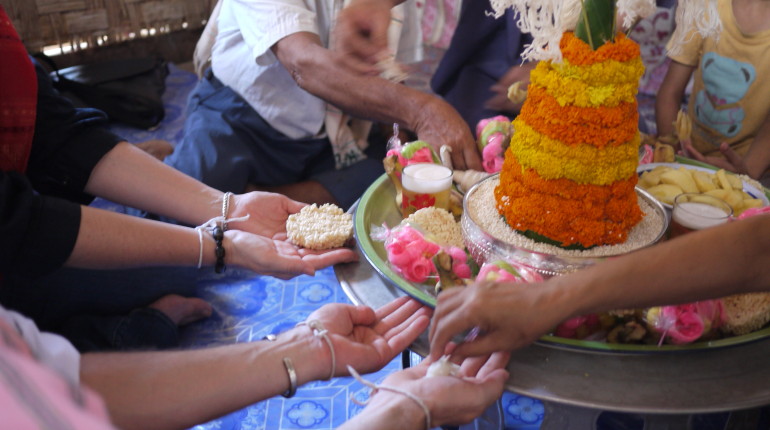
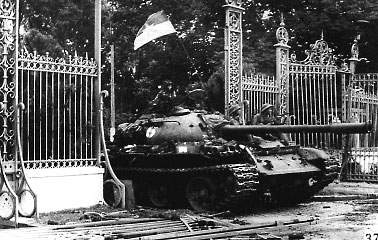
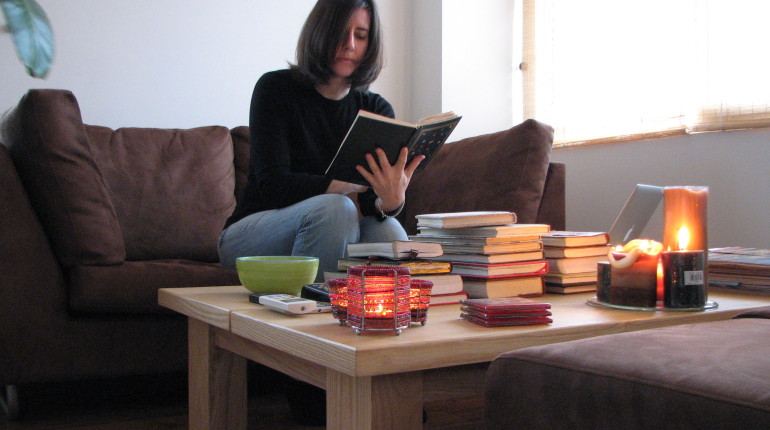
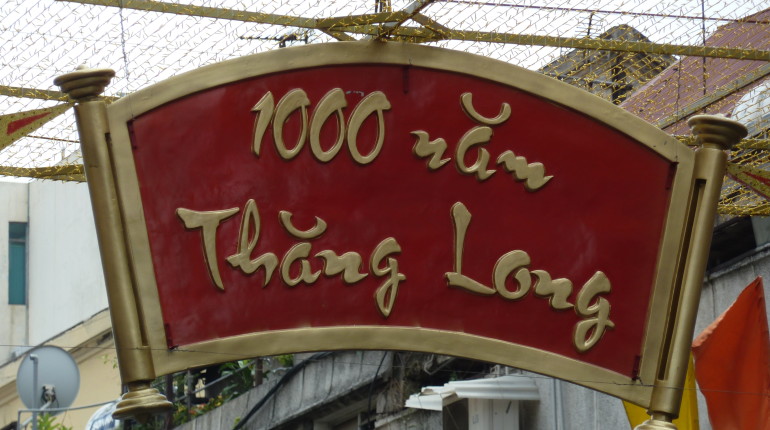
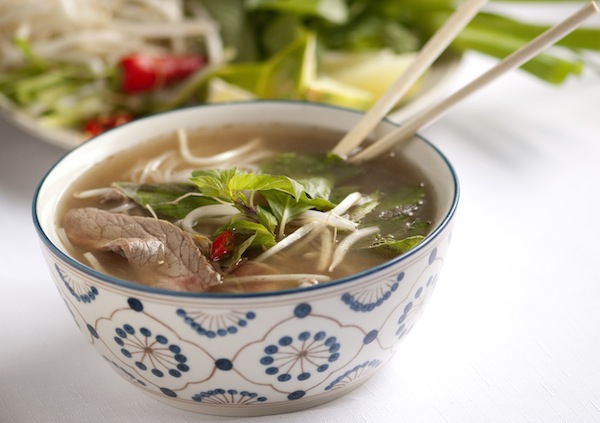




You must be logged in to post a comment.